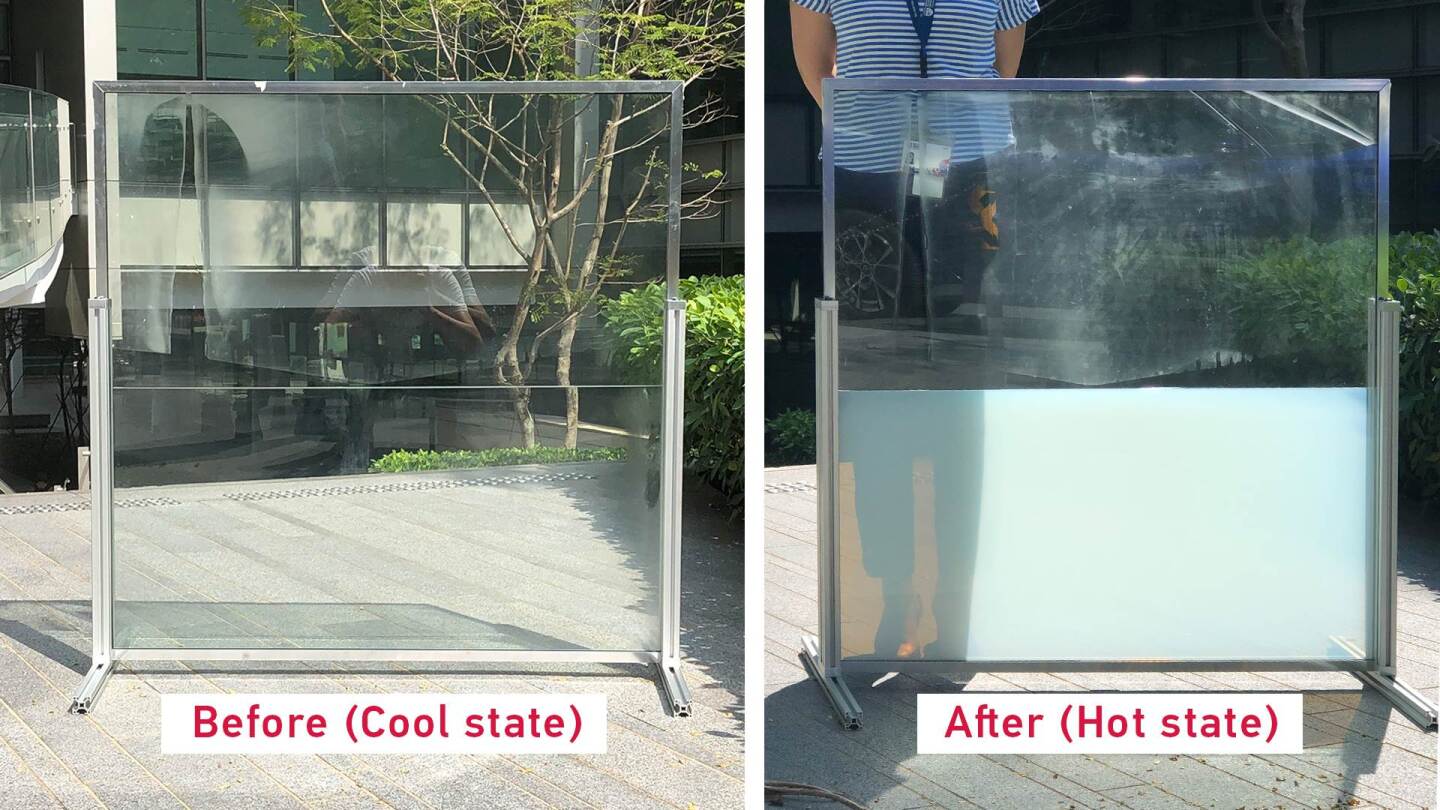There are windows that have electrochromic glass and can become tinted when needed. However, when the glass gets darker, it gets harder to look through it. The visible spectrum of sunlight might be blocked but the infrared spectrum is still not blocked which is responsible for creating heat.
Now here is the innovative part.
Scientists at Singapore’s Nanyang Technological University and Israel’s the Hebrew University of Jerusalem have made a material that is made up of a cheap mixture of titanium dioxide, tungsten trioxide, neodymium-Niobium, and tin oxide. The mixture is coated on the glass and then the glass is linked with an electric circuit.
When there is a need for the heat to come inside like in winters, the circuit can be disconnected from the glass. Owing to this, the sunlight’s infrared radiation comes through the glass. On the contrary, when in summer, the glass is connected to electricity again and it blocks around 70 percent of the infrared radiation. At the same time, it lets 90 percent of the sun’s visible light come through.

Usually, such mechanisms only stay functional for three to five years and then the problems in the circuit start arising. This material is expected to last longer than that.
There is another material that can be used for the coating that uses carbon nanoparticles to either conduct or blocks the passage of ambient heat from the outdoor environment.

“With the ability to control both infrared radiated heat from the sun and conducted heat passing through the window, we expect this technology to be particularly useful in temperate climates, as building occupants can use it to regulate heat loss or gain according to the needs of the changing seasons, while still enjoying much of the view,” says Nanyang’s Dr. Ronn Goei, first author of a paper on the research.
That paper was published in the journal ACS Omega.


